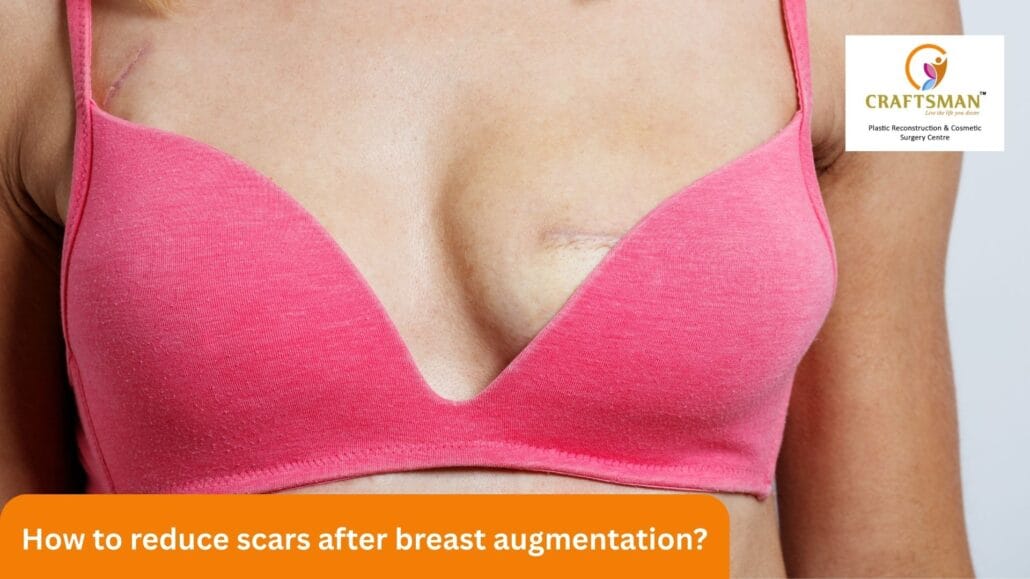How to Reduce Scars After Breast Augmentation?

Reduce scars after breast augmentation… that’s usually the first worry right after the excitement of surgery fades. You’ve done it, you went through with the procedure, and now you’re looking in the mirror. The shape, the size, maybe everything feels right. But then your eyes go to the scars. And suddenly, that’s all you see.
Here’s the thing. Scars are normal. They’re part of healing, whether it’s implants or reduction. And yes, they show up at first. Red, raised, firm, maybe even itchy. But over time, with the right care, they soften. They fade.
Healing isn’t just about closing stitches. It’s about what happens underneath the skin, how your body builds new collagen, how scar tissue settles in, and how you help guide the process. That’s why scar care isn’t optional. It’s essential.
Table of Contents
Why Do Scars Form After Breast Implant Surgery?
Scars form because your body is repairing itself. The moment skin is cut, your body rushes in collagen. Think of it as a glue, stitching fibers together so the wound doesn’t stay open. That glue becomes a scar.
Where that scar ends up depends on the incision.
- Under the breast fold. Usually hidden in the crease. Hardly noticeable unless you lift the breast.
- Around the areola. The darker skin effectively conceals the scar, fitting into the natural colour shift.
- Through the armpit. No scar on the breast itself, but recovery can feel trickier.
- Through the belly button. Rare, but it leaves the breast completely untouched.
Now, implant scars and reduction scars are different stories. Implants? Smaller incisions, often just a couple of centimeters. Reductions? Bigger cuts, sometimes a vertical line, sometimes an anchor shape. More skin removed, more scar length. Different healing, different visibility.
So don’t compare your scars to someone else’s. They won’t look the same, because your surgery wasn’t the same.
Factors That Affect the Appearance of Scars
Here’s where things get personal. Not everyone heals in the same way.
Genetics – Plays a big role in healing. Some people develop thin, flat scars, while others may form raised, stubborn scars.
Age –
Younger skin produces more collagen, which can result in thicker scars.
Older skin heals slower but often forms flatter scars.
Skin Type –
Darker skin tones are more prone to keloids (raised scars that extend beyond the incision).
Fair skin may retain redness for a longer time.
Scar Tissue Buildup – Two main types:
Hypertrophic scars – Raised scars that remain within the incision line and may improve over time.
Keloids – Grow beyond the incision boundary, often larger than the original wound, and are harder to treat.
Every scar is unique, influenced by genetics, skin type, age, healing response, and aftercare.
How to Reduce Scars After Breast Augmentation?
Okay, so what can you do? Here’s the part everyone wants. The practical stuff.
1. Follow Your Plastic Surgeon’s Advice
This one sounds obvious, but it’s the most important. Your surgeon has seen hundreds, maybe thousands, of scars. They know the little mistakes that make them worse. Things like pulling at scabs, cleaning too roughly, or exercising too soon.
In the first weeks, be gentle. Clean softly. Keep the area dry unless you’re told otherwise. Don’t lift heavy things. Don’t stretch your chest in ways that tug on the incision. Healing skin is fragile, and every little pull can widen a scar.
Your surgeon’s rules aren’t suggestions. They’re scar prevention in disguise.
2. Massage the Scar Regularly
Once your surgeon gives the green light, massage becomes your friend. Light circular pressure with your fingertips, a few minutes, a couple of times a day. It increases blood flow. Breaks up tight tissue. Teaches the scar to soften.
It won’t vanish overnight, but with patience, you’ll notice scars flattening, blending more into the skin around them.
3. Use Scar Treatment Creams & Gels
This is where silicone comes in. Sheets or gels. Doctors love them, and for good reason. They keep scars hydrated, reduce itching, and stop collagen from piling up too thick.
Other creams exist too, like vitamin E oils or onion-based gels. Some work, some don’t. Always ask your surgeon before slathering anything on. But if you hear “silicone,” know you’re in good hands.
4. Consider Advanced Scar Management Treatments
Sometimes creams and massages aren’t enough. That’s when tech steps in.
- Laser treatments. They can lighten redness, smooth texture, and make scars blend better.
- Microneedling. Tiny controlled injuries that actually help your skin remodel itself.
Steroid injections. Great for raised, itchy scars. - Scar revision surgery. The final step, if nothing else works. It can re-cut and re-close scars so they heal cleaner.
You probably won’t need these. But it’s good to know they’re there, just in case.
5. Protect Your Scars from the Sun
This one’s simple but powerful. Sun darkens scars, sometimes permanently. And once they’re dark, they’re harder to fade.
Use sunscreen, at least SPF 30. Reapply. Or cover up with clothing if you’re outside. Think of sunscreen as your scar’s shield. You wouldn’t leave a fresh tattoo in the sun, right? Same logic here.
6. Eat a Healing-Friendly Diet
Your body needs building blocks. Healing isn’t free.
Vitamin C helps make collagen. Vitamin E supports repair. Zinc speeds up recovery. Protein is the raw material for new skin. Hydration keeps everything working.
So, oranges, nuts, seeds, chicken, beans, leafy greens. And lots of water. Healing skin is thirsty skin.
7. Avoid Smoking and Unhealthy Habits
Smoking cuts blood flow. Less blood means less oxygen. Less oxygen means scars take longer, look worse, and feel thicker.
Alcohol doesn’t help either, at least not in excess. It dehydrates, weakens skin, slows recovery.
This is your chance to give your body every advantage. If you’ve ever thought about quitting, let your scars be the reason.
When to Consider Scar Revision Surgery?
Here’s the truth. Most scars fade. With time, with care, with patience. But not all of them.
If your scars are still raised, wide, or coloured a year after they’ve developed, revision can be done. Surgeons can re-close scars, use lasers to reduce their elevation, or use steroids to calm down overly active tissue.
It’s not step one. It’s step ten. But it’s there, waiting, in case you need it.
Final Thoughts
Wounds are the way that you make them. They’re proof your body healed. Proof you made it through.
The majority will recede, soften, slide respectfully into the background. What remains is the confidence you built, the body you desired, the decision you made.
Don’t rush it. Healing takes time. Some days you will see they do, some days you won’t. Each scab is a tale of resilience, and with attention that narrative does not have to be in the foreground indefinitely.
Trust the process. Trust your surgeon. Trust your body. Your scars will change, and so will the way you see them.
FAQs
Will my scars become lighter with time?
Yes. The majority of patients find their scars lighten and flatten within the first 6 to 12 months. Some are slower, depending on your skin type and genetics.
How do I assist with the healing?
Do what your surgeon tells you. Keep the site clean. Use silicone treatment. Nutrition is key. Drink plenty of fluids. Avoid the sun. And don’t smoke.
Can plastic surgery or revision surgery minimize scars?
Yes. If scars are persistent, raised, or bothersome, procedures such as laser therapy, steroid injections, microneedling, or revision surgery can be beneficial.
How to treat scars of breast implants?
Consistency. Massage, silicone sheets or gels, sun protection, patience. Scars don’t vanish overnight, but consistent care makes a significant difference.
What is the optimum scar management method after breast augmentation surgeries?
Keep it simple. Aftercare by the surgeon first. Then add silicone therapy, massage, and sun protection. If scars remain thick or dark, additional treatments can be introduced later.
Will plastic or revision surgery reduce scars, or is it possible for an individual to eliminate scars?
Yes. Some scars can be permanent, though, and those more resistant, bumpy, or tender can be addressed with laser therapy, steroid injections, microneedling, or even revision surgery.


